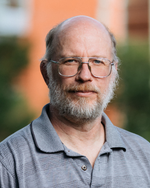David S. WishartPrincipal Investigator
Welcome to the Wishart Research Group home page. Dr. David S. Wishart (PhD Yale, 1991) is a Professor in the Departments of Biological Sciences and Computing Science at the University of Alberta. He is also a senior research officer and the director of the Nano Life Science program at the NRC’s National Institute for Nanotechnology (NINT). He has been with the University of Alberta since 1995. Dr. Wishart has active research programs in structural biology, nanobiology, synthetic biology, prion biology, bioinformatics and metabolomics. Some of his lab's most significant contributions have been in the area of protein chemical shift analysis and the prediction of protein structure.
Dr. Wishart has directed a number of core labs at the U of A over the years including the Faculty of Pharmacy's mass spectrometry core (from 1998-2002), the Polyomx bioinformatics core (2001-2004), the PENCE bioinformatics core facility (2002-2005) and the Genome Canada Bioinformatics Help Desk (2003-2011). From 2006-2009, Dr. Wishart led the Human Metabolome Project (HMP), a multi-university, multi-investigator project that catalogued all of the known metabolites in human tissues and biofluids.
Using advanced methods in NMR spectroscopy, mass spectrometry, multi-dimensional chromatography and machine learning Dr. Wishart and his colleagues identified or found evidence for more than 8000 endogenous metabolites. This information has been archived on a freely accessible web-resource called the Human Metabolome Database.
The methods and ideas developed for the HMP have helped lay the foundation for a number of other metabolomic databases (DrugBank, T3DB, FooDB) and metabolomic software tools (MSEA, MetaboAnalyst, MetPA, MetaboMiner).
They have also led to the development of a number of interesting clinical metabolomics projects and collaborations. These include studies of several cancer biomarkers, the identification of organ transplant biomarkers, and exploring wound healing mechanisms. Please visit Wishart Google Scholar Citations
